|
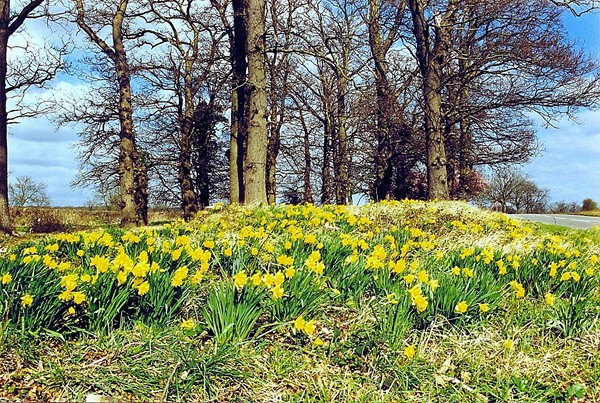 |
|
Natural growth or deliberately planted remains
a mystery but a mass of daffodils greeted motorists from the edge of
a spinney in a lay-by alongside the northbound lane of the A15 near
Bourne in the early spring although this profusion of blooms has not
survived the years and the display today is not quite as colourful
as it was a decade ago. |
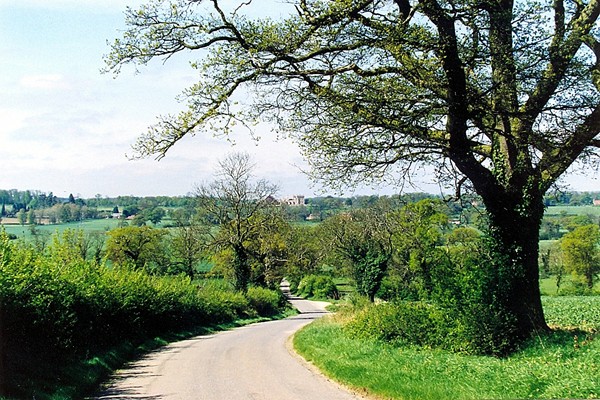 |
|
The grandest stately home in Lincolnshire is
Grimsthorpe Castle which dates back to the 12th century, situated in
a commanding position on a hill and can be seen from all of the
approach roads such as here from across the valley after leaving
Elsthorpe village. |
|
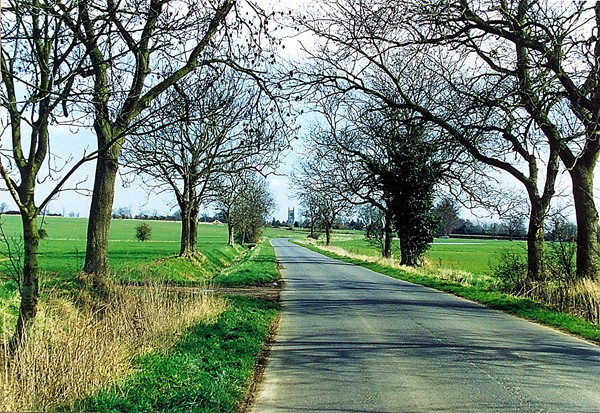 |
|
The countryside in Lincolnshire is
cross-crossed with minor roads and all are a delight to drive down
such as here after leaving Kirkby Underwood, the route lined with
wayside trees and the battlemented 15th century tower of Rippingale
church on the skyline. |
|
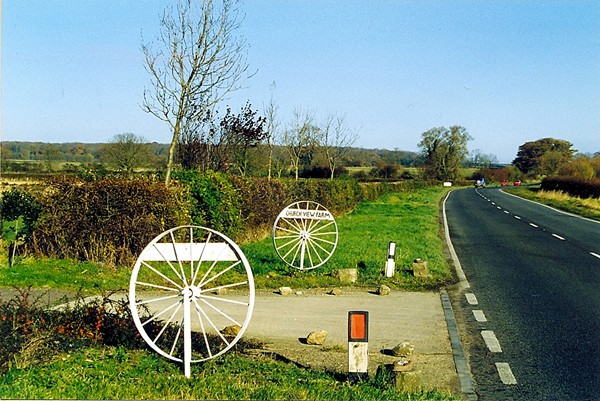 |
|
Wheels from long defunct agricultural machinery were salvaged to
make this distinctive sign for Church View Farm on the main A15
north of Bourne, the name inscribed on the wheels as a reminder that
the spire of Haconby church and the tower of Morton church can both
be seen from this spot. |
|
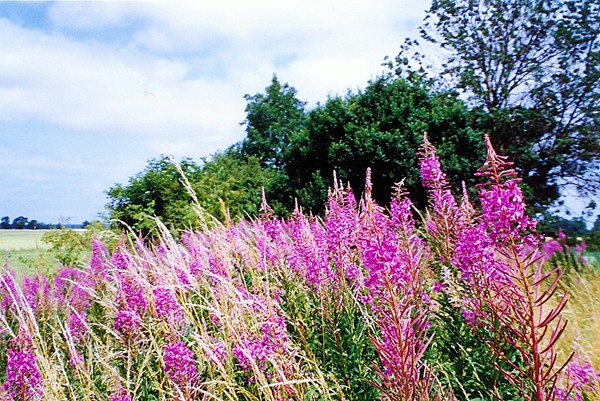 |
|
Abandoned railway tracks provide corridors of countryside that soon
turn into unofficial nature reserves such as here along the old
Bourne to Sleaford line which closed in 1964 and is now home to a
wide variety of flora and fauna while rosebay willowherb (Chamerion
angustifolium) or fireweed as it is also known appears in
abundance each year. |
|
 |
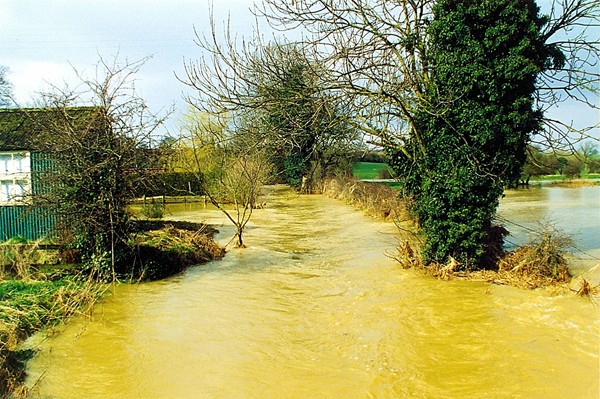 |
|
Heavy rain brought flooding to many areas
during the late winter of 1999, particularly here at Creeton lying
in the valley of the West Glen River which burst its banks and
thousands of gallons of water rushed into the road and surrounding
meadows, turning the countryside into muddy lakes and cutting off
houses on either side of the B1176 at the very foot of the hillside. |
|
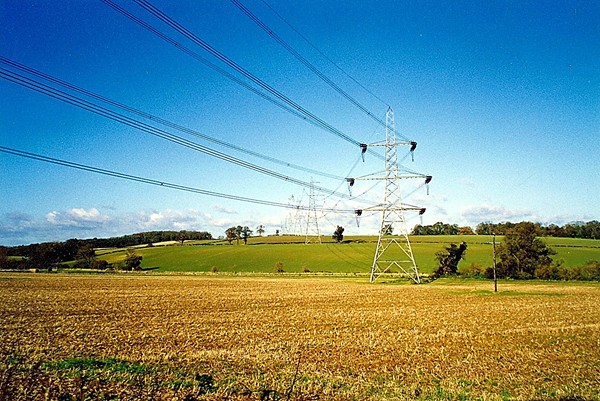 |
|
Electricity pylons have become a familiar sight in the countryside
supporting overhead transmission lines taking power to isolated
communities and although often condemned as eyesores that deface the
rural landscape, these towers of latticed steel supported on
concrete foundations such as here at Aunby may soon be regarded as
monuments of 20th century progress that should be preserved. |
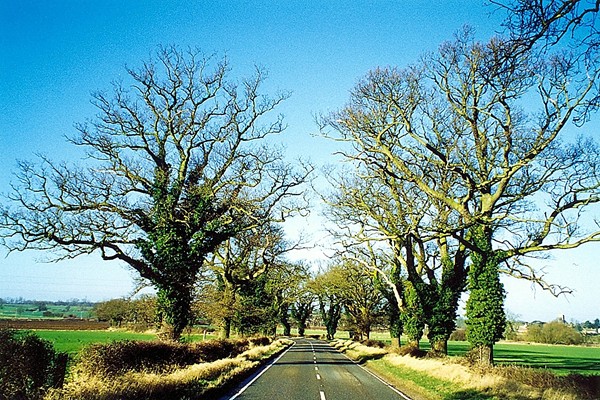 |
|
A short stretch of the A151 between Bourne and
Edenham village has an avenue of ancient oak trees with ivy-clad
trunks on either side that provide a magnificent contrast to the
blue sky on a clear winterís day. |
|
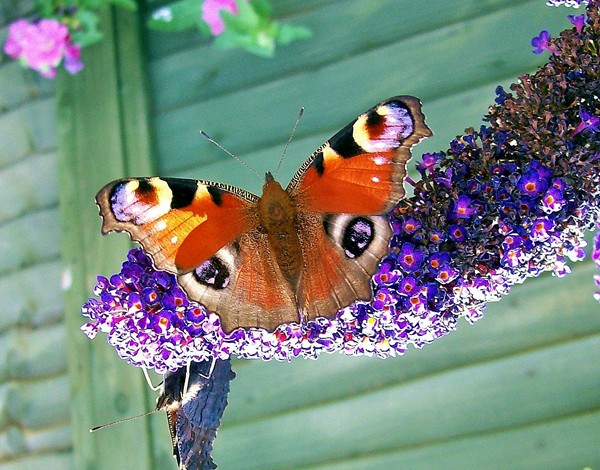 |
|
Butterflies are becoming a less familiar sight
in our back gardens especially those close to farmland where
agricultural chemicals take their toll but we still get occasional
glimpses of these colourful visitors such as this beautiful peacock
(Aglais io) settling on the buddleia long enough to get a
picture. |
|
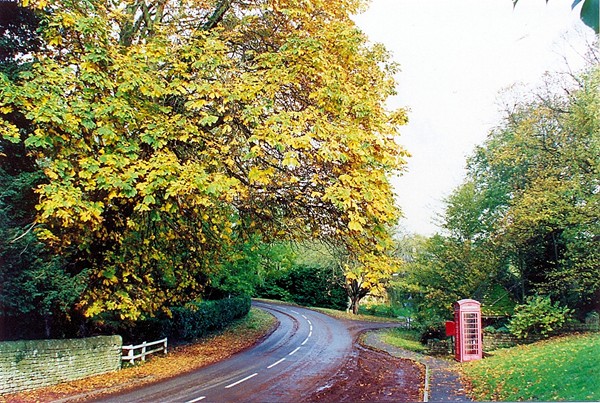 |
|
Autumn turns Witham into an even more
attractive village when the trees take on their seasonal shades of
red, brown and yellow as the leaves fade and begin to fall,
scattering their colourful profusion over road and pavement. |
|
 |
|
The West Glen River seen here bubbling its way
around Careby is one of the two sources of the River Glen but
instead of joining the East Glen River to form the main waterway, it
now flows along the Greatford Cut to join the River Welland upstream
of Market Deeping, a re-routing devised as part of a flood relief
scheme completed in 1953. |
|
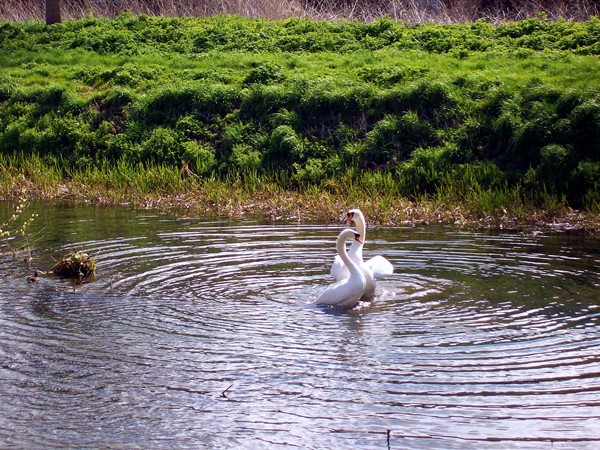 |
|
White or mute swans can often be seen along the Bourne Eau and the
Car Dyke but one of their favourite haunts is behind Eastgate where
the two waterways meet to create a large pool full of weed and algae
where they frequently feed and play. |
 |
|
The route of the old Roman road has hardly
changed for the modern A15 which is badly in need of upgrading to
cope with the increasing flow of traffic between London and the
north with many hazardous stretches such as here north of Bourne
where the footpath also remains perilously close to the carriageway. |
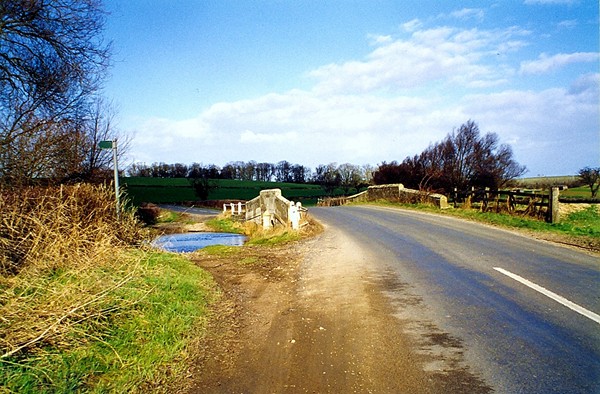 |
|
A small stone bridge dating back to the 19th century carries the
B1176 over the West Glen River south of Careby and alongside is a
ford to enable horses and carts and now heavy farm machinery cross
the waterway. |
|
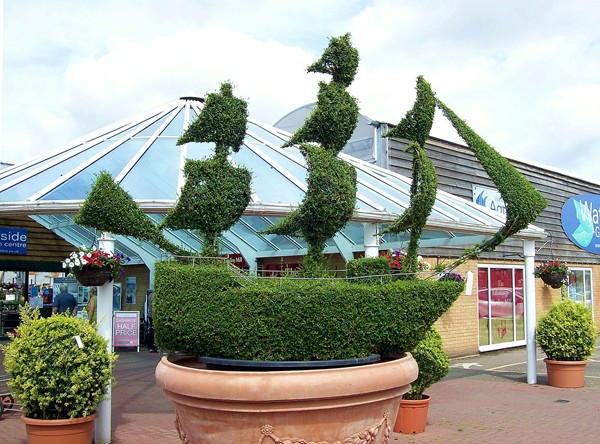 |
|
Topiary which dates from Roman times is the art of training
plants and trees by clipping the foliage to develop clearly defined
shapes, such as this small evergreen shrub (Ligustrum jonandrum)
which has taken years to transform into a galleon and was on
display outside the Waterside Garden Centre near Bourne with a price
label that no doubt reflects the time and expertise involved.
Also on display at the garden centre with a similarly high price was
a topiary replica of the Eiffel Tower shaped from the same evergreen
shrub (below). |
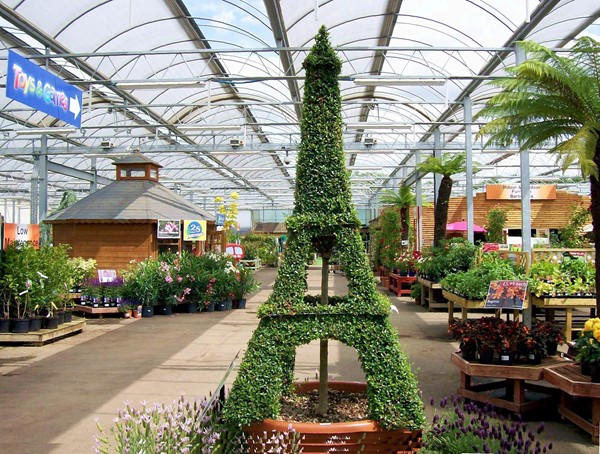 |
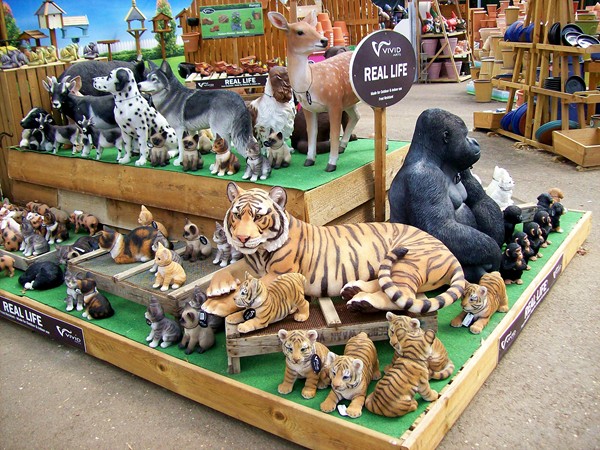 |
|
There was a time when gnomes complete with
floppy hats and fishing rods adorned our gardens but popular
ornaments today include dogs and wild animals such as tigers and
gorillas, seen here on display at the Waterside Garden Centre near
Bourne, where they even have a couple of giraffes awaiting good
homes. |